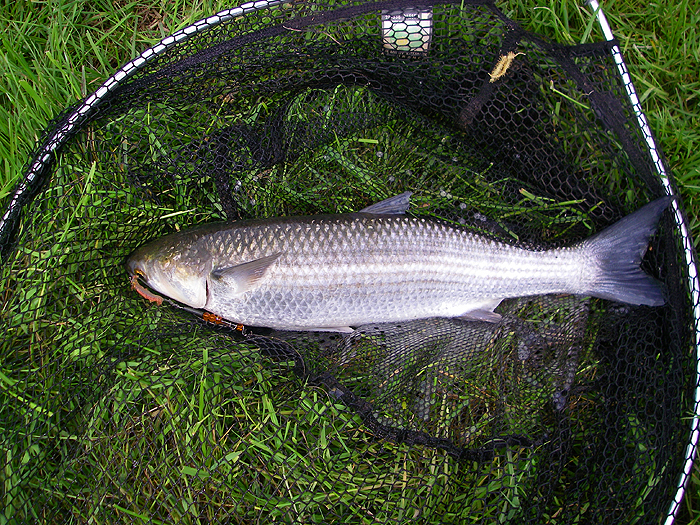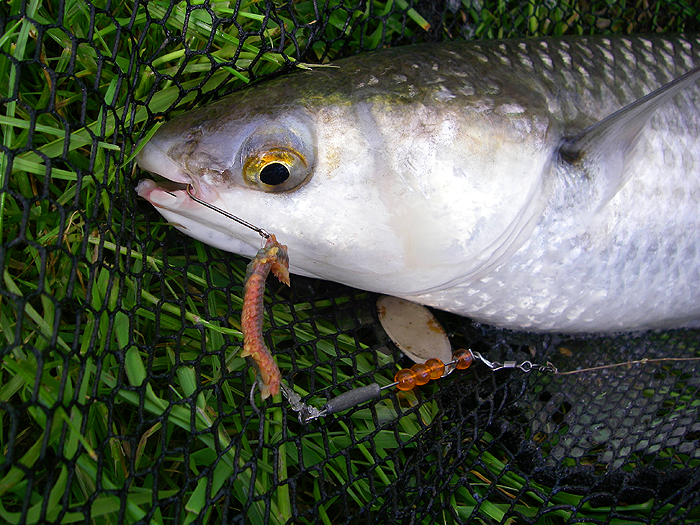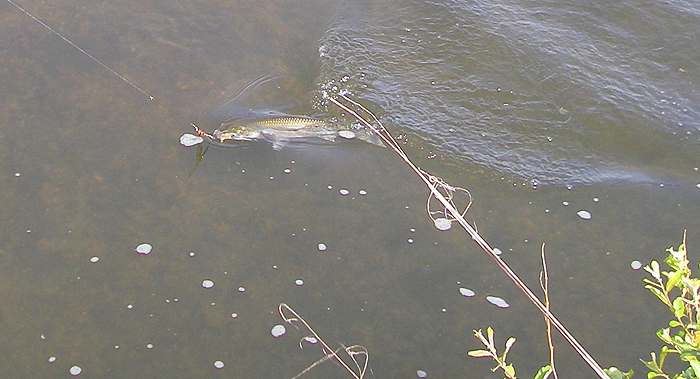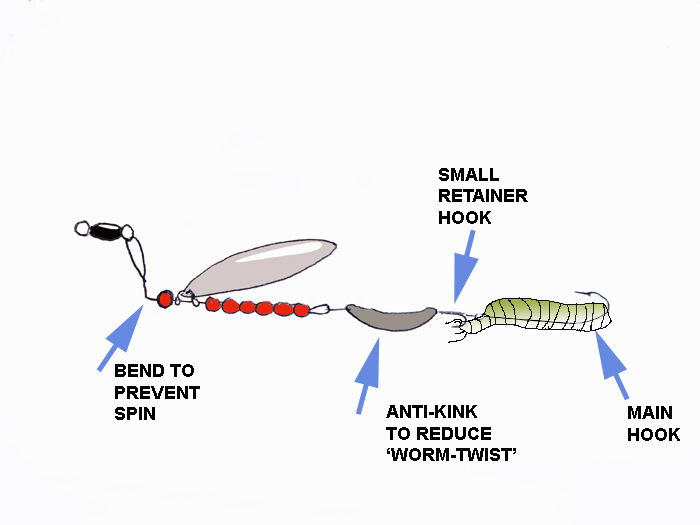

Catch Fish with
Mike Ladle
Information Page
SEA FISHING
For anyone unfamiliar with the site always check the FRESHWATER, SALTWATER and TACK-TICS pages. The Saltwater page now extends back as a record of over several years of (mostly) sea fishing and may be a useful guide as to when to fish. The Freshwater stuff is also up to date now. I keep adding to both. These pages are effectively my diary and the latest will usually be about fishing in the previous day or two. As you see I also add the odd piece from my friends and correspondents if I've not been doing much. The Tactics pages which are chiefly 'how I do it' plus a bit of science are also updated regularly and (I think) worth a read (the earlier ones are mostly tackle and 'how to do it' stuff).
Sea fish from the river.
I'm conscious that I haven't put anything on my saltwater pages for some time. The truth is that the fishing along the coast has been slow with either the fish being absent or the conditions being unsuitable or both. I've tried for bass a few times and seen (or scared) one or two but not caught anything much and the same has applied to several pals who've given it a go. Hopefully it's just a blip and not the start of another dry period like we experienced in the early 1990s (the EU's attempts to reduce bass exploitation by 80% are in the back of my mind). Anyway, I'm not one to flog away for no returns if I can help it and to try and minimise the number of blank trips I generally play the percentages and fish for something that I can catch. So trout, salmon, pike, mullet and carp have all been on the agenda recently (see my freshwater blog pages).
The truth is that I find mullet intriguing so after catching one and missing/losing a few thinlips the other day, I decided to give it another go. This latest attempt at mullet spinning produced a 1.6kg thinlip which battled really hard. It was landed on exactly the same gear which has recently produced three much larger salmon so I have a fair comparison. The mullet, for its size, was a match for the salmon. I later landed a smaller mullet but as usual I missed several decent takes. The rest of this page is a sort of record of my thoughts on the missed bites.My two sessions only required half-a dozen ragworm so it is pretty economical on bait. My spinners are home made from a bit of stainless wire and a few silver blades. The major problem is not getting the interest of the mullet but in actually hooking them. Problem number one is what size of hook to use. Ideally it will be small (say size 10) so that it gets a grip in the meaty lips of the fish. However, ragworm tend to be on the chunky side and so they mask small hooks and it looks as though something like a size six or eight may be best. The hooks can be fairly fine in the wire because although the fish fight very hard they are not going to be huge (five pounds is a monster). With constant casting and retrieving the worm (quickly softening as it absorbs fresh water) tends to slide down onto the bend of the hook and this again impedes hooking so a small, retaining hook ahead of the main one is almost essential. I've tried various arrangements of hooks but none of them has been ideal. Lastly, the bait tends to spin. This is due to the fact that the blade is rotating quickly and there's always a certain amount of friction twisting the shaft, also the worm is generally bent a bit so this imparts its own gyration to the bait. A spinning, twisting worm is not (it seems to me) easy for the mullet to grasp. Anyway, I am setting about trying to resolve all these problems and I'll look at them in turn.
The best type of 'effective' hook to use seems to be a fine wire Aberdeen pattern (I never use them for any other sort of fishing). The worm can be slid up the shank and sits fairly straight while the bend is wide enough to allow it to nick into the lip of the fish. To hold the piece of worm in position a small hook needs to be fitted just ahead of the Aberdeen, a size ten or twelve is about right for this. If the section of worm is pierced about one centimetre behind the front end this will leave a piece that can be impaled on the retaining hook. So now we have a section of worm, three or four centimetres in length threaded along the Aberdeen hook, nicked onto the small hook at the front and neatly cut off at the bend of the larger hook - just where the mullet are likely to try and suck at it. Good!
Lastly we have the problem of the spinning worm. A sharp bend in the front loop of the shaft (see diagram) certainly tends to reduce the tendency of the whole lure to spin. It seems to me that the answer to any remaining twist of the worm is to incorporate some sort of anti-kink on the link joining the spinner shaft to the hooks. A tiny barrel weight bent into a curve and flattened side to side may be the simple solution and is what I shall try next. However, my R&D is still in progress and I'm not sure if it will work. As most readers of this will know I'm the last person to employ complex 'rigs' but in this case I KNOW that the method is deadly and these are simply refinements intended to catch me even more mullet.
If you have any comments or questions about fish, methods, tactics or 'what have you!' get in touch with me by sending an E-MAIL to - docladle@hotmail.com
Nice fish.

Nicely hooked.

Another mullet.

New design spinner.
